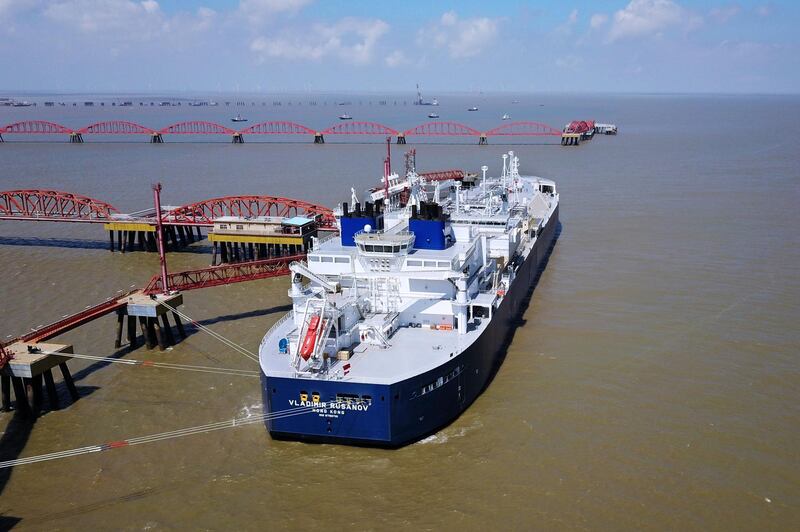China plans to slap tariffs on US natural gas exports as trade tensions escalate, a likely setback for the burgeoning energy relationship between the world’s two largest economies.
The Asian nation said in a statement on Tuesday it would levy a 10 per cent duty on liquefied natural gas starting September 24, in retaliation for a fresh round of tariffs announced the day before by the US.
While China’s levy is less than the 25 per cent it proposed last month, the tariff still brings additional pressure to bear on the US gas industry, which is competing with Russia, Australia and Qatar for market share in China, the world’s biggest buyer. Just last year, American officials were courting Chinese companies to invest in new export projects.
_______________
Read more:
Trump slaps tariffs on $200bn of Chinese goods and Beijing retaliates
Donald Trump hits China with biggest tariffs yet as US imposes $200bn on goods
_______________
China’s move signals how much pain presidents Xi Jinping and Donald Trump are willing to endure not to back down from a trade fight. Mr Trump risks stifling the US gas export industry, which is seeking about $130 billion to fund more than a dozen projects, while Xi threatens to raise the cost of his drive to eliminate smog by burning less coal.
"The proposed 10 per cent tariff as opposed to 25 per cent is not as harsh, but will still push Chinese buyers to other potential sellers in Asia and the Mideast," Madeline Jowdy, senior director at S&P Global Platts in New York, said. The duties mean "the US will be considered less of a low-cost option."
China’s push to use more natural gas is driving global demand growth, with LNG imports jumping 47 per cent in the first seven months of the year.
Though it is the third-largest buyer of US cargoes, American supply made up a little less than 6 per cent of purchases over that period, according to Sanford Bernstein & Co. If US companies can seize 20 per cent of the market by 2030, it could lower the trade deficit with China by $50 billion, Bernstein estimates.
Higher oil prices and a surge in LNG demand have reignited interest in export ventures, with about 15 US projects targeting final investment decision this year and next, the most of any nation, according to Bloomberg NEF. Projects have been seeking investments or off-take agreements from China, which earlier this year topped Japan as the world’s biggest gas importer.
On Monday, Cheniere Energy, America’s first and biggest shipper of shale gas, struck a 15-year agreement to sell the fuel to commodities trader Vitol Group. The pact is Cheniere’s fifth this year. Venture Global LNG, which is developing a terminal in Louisiana, has finalised four such contracts over that period.
Liquefied Natural Gas, which has yet to make a final investment decision on the $4.35 billion Magnolia LNG project in Louisiana, expects Chinese buyers will wait for uncertainty on tariffs to be removed before signing contracts, chief executive Greg Vesey said Monday at an industry conference in Barcelona.
“This has definitely given potential Chinese investors and buyers of US LNG reason to consider whether this is a long-term commitment they can count on,” said Jason Feer, head of business intelligence at ship broker Poten & Partners.
Nations like Australia and Qatar, which compete with the US for LNG market share, could benefit from the trade tensions, Ms Jowdy said.
“Legacy sellers such as Qatar have significant volumes of unsold LNG emerging in the 2020s,” she said. “It is clear that trading companies and portfolio players are making alternative plans for US LNG volumes that had been earmarked for China this winter.”
The vessel GasLog Greece, which left Cheniere’s liquefied natural gas export terminal in Louisiana on August 15 en route to China, changed its destination mid-journey to South Korea.
It was one of at least two US LNG shipments heading for China during the past month. The other ship, Rioja Knutsen, arrived on September 3 at Tianjin.






